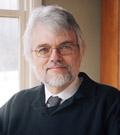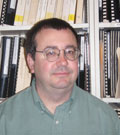Race, Ethnicity and Identity in 2010
Michael Hout and Jon Stiles (University of California, Berkeley)
Hout and Stiles are primarily interested in identities: how they form, work and fade. Why does the census classify people using some categories instead of others? The answers lie in the blend of planning and serendipity that bedevil many complicated decisions.
“There was a big debate when Barack Obama won the presidential election: Was he really an American, because his father was born outside this country?” Hout said. “People wanted to see his birth certificate. Americans care about this issue.”
Drawing on the U.S. Census tally (race is one of the few full-enumeration items), Census Bureau surveys, and surveys by others, this project will compare how people answer the official questions with their everyday usage. A national epidemiological survey primarily focused on alcohol issues (NESARC) will shed light on the changing role and importance that race and Hispanic origin plays for the first, second, third and fourth generations of immigrants. The similarities and differences in those answers will be a rare window into how people think about the categories the government uses, and how those categories fit in people's lives.
The answers people provide to the census have substance as well as slant; the distribution of people across official categories defines American diversity to some degree. The researchers will break that down into diversity within individuals and within households. We expect to see diversity growing on these fronts as multiracial individuals, mixed marriages and other multiracial living arrangements become more prevalent.
Today's diversity is an accumulation of historical sagas involving slavery, fleeing from oppression, moving to opportunity and hope, and their legacies: major events that framed the racial and ancestry composition of the U.S.A. In many ways, individuals trim and shape their histories to frame their identities through the census categories.
Many of the key facts are already known about such demographic elements as fertility, mortality, age structure, and immigration, all of which will form the nation's population over the next 30 years. To the degree to which consensus allows us, we will tender a few predictions about the medium-run future of the nation's current groups.
Throughout our exposition we will be attentive to variations on the major themes as well as to those themes themselves. In particular we will inform ourselves systematically about regional, rural/urban, educational, and age variations and bring that information to the reader as it reinforces or cautions our interpretations.



